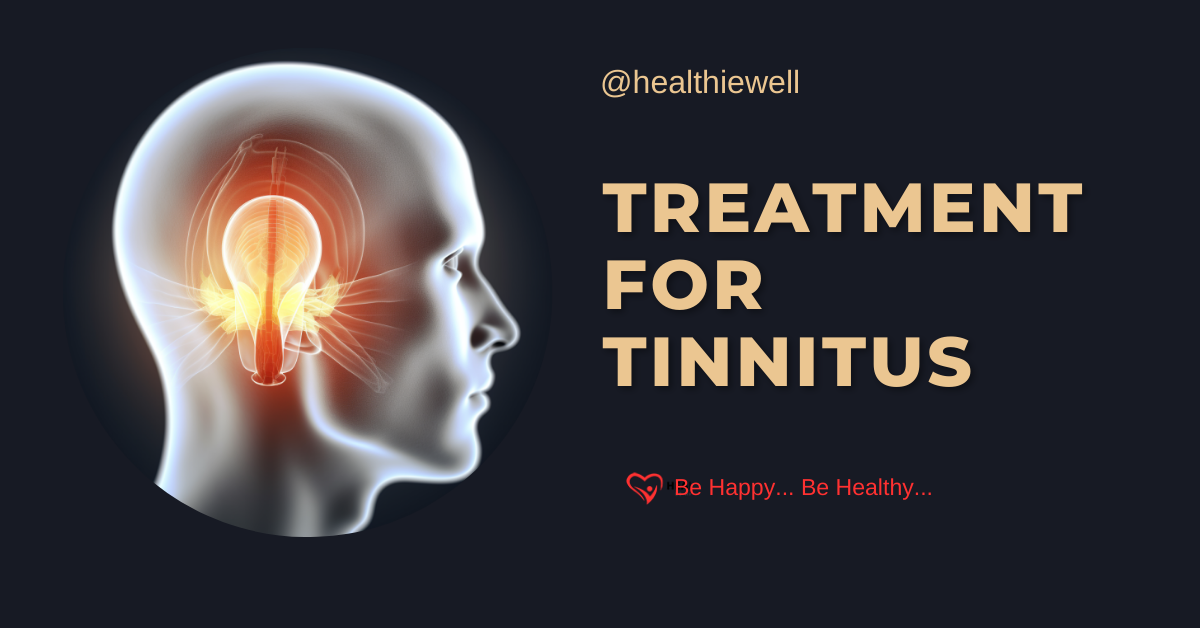Attention-grabbing statement about the prevalence and impact of tinnitus: Capture the reader’s attention by highlighting the widespread occurrence and significant effects on individuals.
Definition of tinnitus and its symptoms: Provide a clear explanation of tinnitus as the perception of sound in the absence of external stimuli and briefly describe its common associated symptoms.
Thesis statement: The most effective treatment for tinnitus in 2023 involves a combination of therapies tailored to the individual, including sound therapy, cognitive behavioral therapy, and innovative medical interventions. Introduce that a comprehensive and personalized approach is key to successful tinnitus treatment.
Read more : Why are bodyweight exercises harder than weights?
Understanding Tinnitus
Explaining the underlying causes and mechanisms of tinnitus: Provide an overview of the common causes of tinnitus, such as exposure to loud noise, age-related hearing loss, and certain medical conditions. Briefly discuss how these factors can lead to the perception of tinnitus sounds.
- Discussing common causes such as exposure to loud noise, age-related hearing loss, and medical conditions: Highlight the various factors that can contribute to the development of tinnitus.
- Highlighting the role of the brain’s auditory system in perceiving tinnitus sounds: Explain how the brain’s auditory system plays a role in the generation and perception of tinnitus sounds.
Conventional Treatment Approaches
Sound therapy: Explore using sound-based interventions as a conventional treatment for tinnitus.
- Describing the use of white noise, masking devices, or hearing aids to manage tinnitus: Explain how these devices can provide external sounds to mask or distract from tinnitus sounds.
- Explaining how sound therapy can help individuals habituate to tinnitus sounds: Describe the concept of habituation, where individuals become accustomed to and less bothered by tinnitus over time through consistent exposure to neutral or soothing sounds.
Cognitive behavioral therapy (CBT): Introduce CBT as a psychological approach to tinnitus management.
- Introducing CBT as a psychological approach to tinnitus management: Explain how CBT helps individuals modify their thoughts, behaviors, and emotional responses related to tinnitus.
- Discussing the techniques used in CBT, such as cognitive restructuring and relaxation training: Describe specific techniques employed in CBT to help individuals reframe their thoughts and manage their emotional responses to tinnitus.
Read more : Developing grip strength with sweaty hands when doing pull-ups
Innovative Medical Interventions
Neuromodulation techniques: Explore innovative approaches that modulate brain activity to alleviate tinnitus symptoms.
- Exploring the use of transcranial magnetic stimulation (TMS) and transcutaneous electrical nerve stimulation (TENS): Describe how this non-invasive techniques target and modulate specific areas of the brain associated with tinnitus perception.
- Describing how these techniques modulate brain activity and reduce tinnitus perception: Explain how TMS and TENS can disrupt abnormal neural activity and potentially reduce the perception of tinnitus sounds.
Pharmacological treatments: Discuss emerging medications and their potential in managing tinnitus symptoms.
- Discussing emerging medications and their potential in managing tinnitus symptoms: Highlight promising pharmaceutical treatments that may target specific mechanisms involved in tinnitus.
- Highlighting ongoing research and clinical trials for pharmaceutical interventions: Mention the importance of continuing research and clinical trials in developing effective medications for tinnitus treatment.
Read more: 5 Best Weight Loss Diets of the Year
Individualized Treatment Approaches
Importance of personalized treatment plans: Emphasize the need for individualized approaches to tinnitus treatment due to the diverse nature of the condition.
- Emphasizing tinnitus variability among individuals: Highlight how tinnitus can differ in its causes, severity, and impact on individuals.
- Advocating for customized treatment strategies based on specific needs and preferences: Highlight the importance of tailoring treatment plans to address each individual’s unique needs and preferences.
Multi-disciplinary approach: Discuss the benefits of combining different therapies and involving multiple healthcare professionals in comprehensive care.
- Discussing the benefits of combining different therapies, such as sound therapy, CBT, and medical interventions: Explain how integrating multiple treatment modalities can provide a holistic approach to tinnitus management.
- Exploring the collaboration between audiologists, psychologists, and medical professionals in delivering comprehensive care: Highlight the importance of a collaborative approach among healthcare professionals from different disciplines to provide the best possible treatment outcomes.
Future Directions and Promising Research
Overview of ongoing research efforts: Discuss current initiatives to advance tinnitus treatment.
- Highlighting advancements in neuroimaging and understanding tinnitus mechanisms: Explain how neuroimaging techniques contribute to a deeper understanding of tinnitus and its underlying mechanisms.
- Exploring emerging treatment modalities, such as brain-computer interfaces or gene therapy: Mention innovative approaches under investigation that hold promise for future tinnitus treatment.
Read more : Kyle Richards’ Incredible 2023 Weight Loss Success Story
Potential breakthroughs and possibilities: Speculate on likely advancements and breakthroughs in tinnitus treatment.
- Discussing the potential for personalized precision medicine approaches: Explore the concept of tailoring treatment based on individual characteristics and genetic factors.
- Speculating on integrating technology and wearable devices in tinnitus management: Discuss the potential for incorporating technology and wearable devices to provide personalized and real-time relief.
Conclusion
Summarize the current landscape of tinnitus treatment in 2023: Recap the various treatment approaches discussed, including sound therapy, CBT, and innovative medical interventions.
Reinforce the effectiveness of a tailored approach combining these therapies for tinnitus management: Emphasize the importance of an individualized approach to achieve optimal treatment outcomes.
Highlight the importance of ongoing research and individualized care in improving tinnitus management: Reinforce the significance of continued research efforts and personalized care in enhancing treatment options for individuals with tinnitus.
Encourage individuals experiencing tinnitus to seek professional help and explore available treatment options: Urge readers to consult healthcare professionals for accurate diagnosis, guidance, and access to the most effective treatment strategies available.

